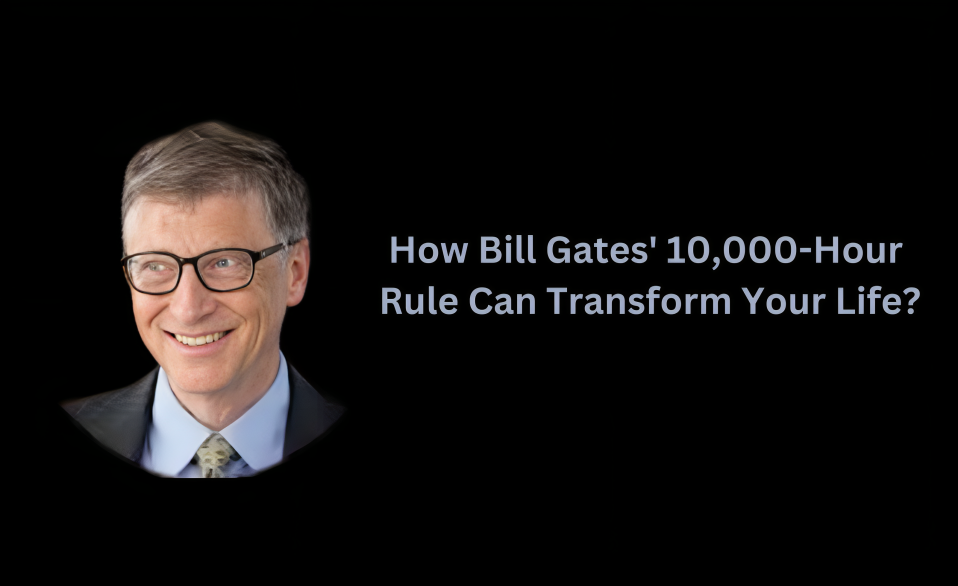
In his seminal book Outliers, Malcolm Gladwell introduced the concept of the 10,000-hour rule, popularised by the story of Bill Gates’ formative years as a young programmer.
The premise is simple yet profound: to truly master any skill, one must devote at least 10,000 hours to deliberate practice.
Understanding the 10,000-hour rule
The 10,000-hour rule is not about mindlessly clocking in hours. It’s about purposeful, focused, and deliberate practice. It’s about pushing past the comfort zone, making mistakes, learning from them, and persisting with unwavering determination.
Bill Gates’ example
Bill Gates, often cited as a living testament to the efficacy of the rule, spent countless hours coding in his formative years. His commitment to refining his craft played a pivotal role in the creation of Microsoft, an empire that forever altered the technology landscape. Gates’ journey epitomises the idea that sustained effort and dedication are integral to achieving unparalleled success.
Implementing the 10,000-hour rule in your life
Defining your passion
The first step in applying the 10,000-hour rule is identifying your passion.
What drives you? What field ignites your curiosity? Once you pinpoint your passion, you’re on the path to mastery. Gates’ passion for technology fueled his tireless commitment to coding, setting the stage for his groundbreaking achievements.
Structuring deliberate practice
Deliberate practice is the linchpin of the 10,000-hour rule. It involves a systematic and focused approach to improvement. Break down your learning into manageable chunks, identify weaknesses, and relentlessly work to address them. Gates’ early coding sessions were a testament to the power of deliberate practice, shaping his programming prowess.
Embracing the journey
Mastery is not an overnight accomplishment; it’s a journey. Embrace the process, recognising that setbacks are stepping stones to success. Gates faced challenges and failures, but each experience refined his skills. Adopt a growth mindset, viewing obstacles as opportunities to learn and grow.
For example, In the late 1990s, Microsoft, led by Bill Gates, became embroiled in a high-profile antitrust lawsuit. The U.S. Department of Justice accused the company of anti-competitive practices. This legal battle posed a significant challenge to Gates and Microsoft, requiring strategic legal manoeuvres to navigate the complexities of the case. Once they overcame it, Microsoft continued to chart even higher growth.
Achieving excellence in the digital age
Leveraging technological resources
In today’s digital age, mastering any field is augmented by leveraging technological resources. Online courses, virtual mentors, and collaborative platforms provide unprecedented opportunities for skill development. Gates’ journey, though rooted in a different era, aligns with the essence of continual learning, a principle vital in the contemporary landscape.
Balancing quantity and quality
While the 10,000-hour rule emphasises the quantity of practice, it’s crucial not to compromise on quality. Strive for a balance between sheer volume and purposeful engagement. Gates’ coding marathons were characterised by both intensity and precision, exemplifying the harmony between quantity and quality.




![Read more about the article [Matrix Moments] Why Captain Fresh is looking closely at the online B2B seafood market](https://blog.digitalsevaa.com/wp-content/uploads/2021/12/matrixmoments-audioboom-episode82-b-1639228699308-300x157.jpg)





